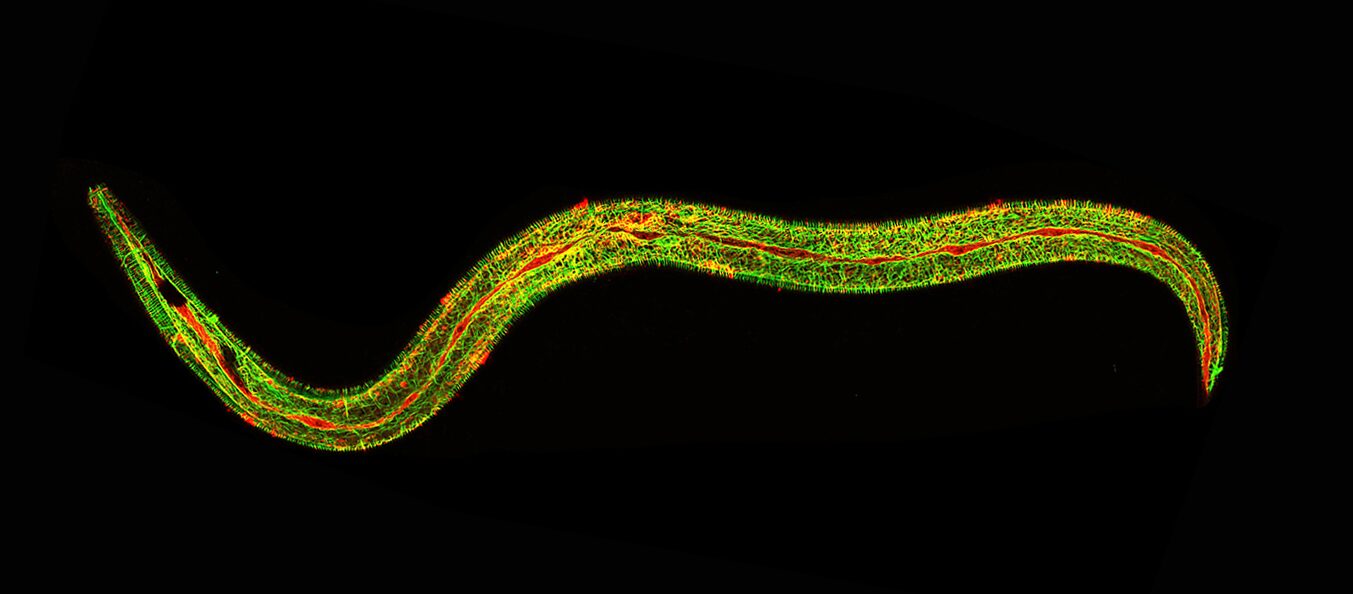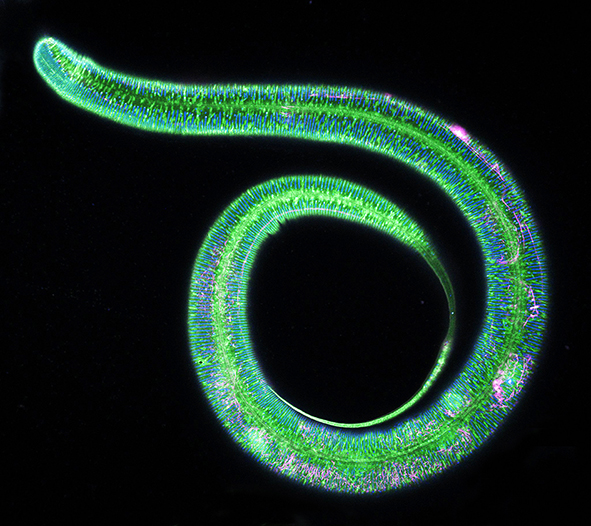
Project: SensoSkin
About
Project : SensoSkin
Apical extracellular matrix (aECM) shapes and protects the epithelium in all organisms. We previously showed that like skin damage or infection, changing the mechanical properties of the aECM activate an immune response in the C. elegans epidermis. Using interdisciplinary approaches, our aim is to decipher how the epidermis is sensing the mechanical state of the aECM. Our studies are expected to give fundamental insights into how the aECM physical properties affect tissue homeostasis and immunity in other animals.

OBJECTIVES:
- Uncover how aECM morphogenesis is coupled to epidermal cytoskeletal reorganization,
- Define the biophysical properties of the skin and formulate a predictive model, in collaboration with Claire Valotteau DyNaMo, Centuri Marseille & Alexander Erlich, LIPhy Grenoble,
- Characterize the cellular structure(s) relaying aECM tension to the epidermis.

Publications
2025
A defining member of the new cysteine-cradle family is an aECM protein signaling skin damage in C. elegans.
PLoS Genet 2025 Mar; 21(3): e1011593.
2024
The Caenorhabditis elegans cuticle and precuticle: a model for studying dynamic apical extracellular matrices in vivo.
Genetics 2024 Aug; 227(4): .
2024
C. elegans epiculins define specific compartments in the apical extracellular matrix and function in wound repair.
Development 2024 Nov; 151(21): .
2023
Body stiffness is a mechanical property that facilitates contact-mediated mate recognition in Caenorhabditis elegans.
Curr Biol 2023 Sep; 33(17): 3585-3596.e5.
2023
Meisosomes, folded membrane microdomains between the apical extracellular matrix and epidermis.
Elife 2023 Mar; 12(): .
2021
Innate Immunity Promotes Sleep through Epidermal Antimicrobial Peptides.
Curr Biol 2021 Feb; 31(3): 564-577.e12.
2020
Microtubule plus-end dynamics link wound repair to the innate immune response.
Elife 2020 Jan; 9(): .
2018
A Damage Sensor Associated with the Cuticle Coordinates Three Core Environmental Stress Responses in Caenorhabditis elegans.
Genetics 2018 Apr; 208(4): 1467-1482.




